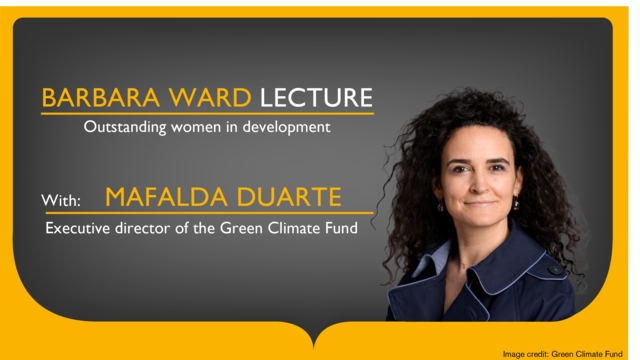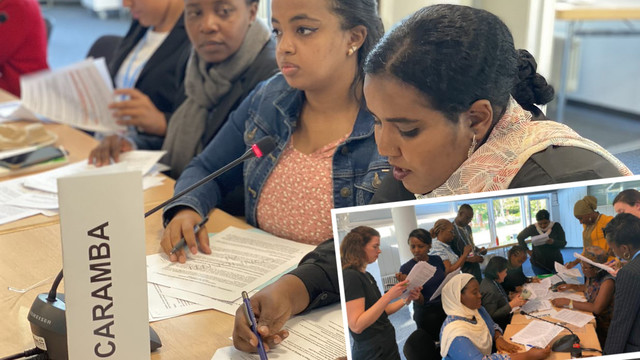I was one among the many sleep-deprived observers present at the birth of the Kyoto Protocol, during the early hours of a cold December morning in 1997. I cannot claim to have formed an immediate emotional attachment. Along with many others, I despaired already at the weakling’s lack of ambition, and numerous defects (politely called loopholes) that rendered it a joke on the planet. It was optimistically proclaimed a “first small step”, implying that better would follow once the world “warmed up” to the idea of living in a carbon-constrained world.
Fourteen years on, it appears that small step may be the best we’ll be able to do for a while, given the current political and economic climate. As a result, even many of the Kyoto protocol’s former critics have turned defenders, scrambling to rescue it from death or paralysis in 2012, when its first commitment period runs out.
According to these “yea sayers” (mostly represented by developing countries, and civil society organisations), the Kyoto Protocol may have been weak in ambition, but it has at least a few desirable attributes that would be impossible to re-negotiate in the current climate – including its:
- legally binding nature;
- basis in the “common but differentiated responsibilities” principle of the UN Framework Climate Change Convention, which calls for developed nations to act first and fastest; and
- Clean Development Mechanism, which generates limited financing for climate change activities in developing countries.
At the helm of the “nay sayers” is the US, which would prefer to avoid any globally agreed, legally binding mitigation targets like those under the Kyoto Protocol. In keeping with its general dislike of all things multilateral, it prefers the “pledge and review” approach promoted under the Cancun Agreements, where all countries unilaterally decide the targets they are willing to bring to the table. While (as a non-party) the US will have nothing to do with a second commitment period under the Kyoto Protocol, other developed countries, including Japan, Canada and Russia, have made it clear that they plan to jump ship. Just earlier this week, Canadian environment minister Peter Kent announced he was going to Durban to “… put Kyoto behind us”.
The European Union – “fence sitters” on Kyoto – stated in October this year that they were open to a second commitment period to last until 2020 – but subject to a list of ‘conditionalities’, which include a roadmap for a single legally binding instrument that includes all Parties (including all developed and developing countries). Some more fence-jumping and mixed-signaling might have taken place since this position was declared. A week before Durban, EU climate Commissioner Connie Hedegaard is reported to have told the media that the EU's roadmap is to aim for an agreement to be drawn up by 2016, and come into force in 2020.
For six years, governments have tried to find a way through these disparate and often ambiguous positions. Civil society observers have tired of using words such as hope, trust and leadership to goad their leaders to rise above the haggling and find a genuine solution.
But here we are in Durban, aware that nothing short of a miracle will result in a legally-binding agreement that keeps global temperature rise to below 2°C.
Time is running out (if you’ll pardon another climate cliché). The 2010 Cancun Agreements agreed that countries “shall aim” to complete the work on the future of the Kyoto Protocol in time to ensure that there is no gap between the first and second commitment period. In theory, this aspirational goal has one year to be realized. But for this to happen, Durban will have to provide a mandate for negotiating the details of an agreement in the course of the next 12 months, to be adopted at the next conference in Asia, in December 2012.
The only way this can happen is if the EU, its allies and developing countries sideline the nay-sayers, and agree on a ‘sequence’ of events with definite dates which address both the developing countries’ demand for a second commitment period, and the EU’s demand for work to begin on a single legally binding instrument.
Tough choice
Here’s the hard part: the EU, its allies and developing countries will have to bite the bullet and simply sideline the US and other detractors. Sadly, we still live in a world where rich countries can act with impunity. There is nothing the rest of the world can do (no court of law, no trade sanctions) if a powerful country chooses to turn a blind eye on the impact of its lifestyle and politics on the rest of the world.
Intentionally leaving behind countries with such a large share of global emissions will be a difficult step to take. But the choice is either to waste many more years negotiating with the US while turning a blind eye to its ‘no-can-do’ domestic politics, or to ask it to step aside and come back when its domestic political scene has grown up enough to accept and act on responsibility.
In the meantime, the EU and its allies can work with developing countries to reinforce the basic principles of the climate convention, and building a much needed, stronger basis of trust. The sequencing agreed in Durban will have to address developing country concerns, that developed countries must have something to show for the long head start they have had in belching out greenhouse gases. Lets face it, the effort made by developed countries in cutting emissions has been miniscule in the past fourteen years – a mere whiling away of time, until they could demand (with more legitimacy than before) that developing country emissions have risen to a point where they too must take on legally-binding action.
Some developing countries have already indicated that they will be willing to consider legally-binding action as part of the third commitment period. For example, the Chinese climate change statement that came out just before Durban indicated for the first time that developing countries should also be clarified in the form of law, based on the principle of common but differentiated responsibilities, after developed countries have taken on emissions cuts under a second commitment period.
What needs to be worked out in Durban, then, is:
- a definite agreement and mandate to negotiate the second commitment period for willing developed countries over the next year and
- a precise sequence/ timetable/ roadmap for who-will-do-what-when with regard to a legally binding agreement under the third commitment period.
Developing countries will also need to be reassured that the legally-binding agreement for the third commitment period will include certain features of the Kyoto Protocol – including, in particular, respect for the principle of common but differentiated responsibilities. It has been suggested that the Kyoto protocol framework could be taken as a basis of this agreement and adapted, to avoid reopening debate on agreed principles.
If Durban ends without a definite mandate to negotiate a second commitment period over the next year, there will be no legally binding emissions-reduction targets in place. Any other outcome (including a political declaration to provisionally abide by the Protocol in the transitional phase) will be non-legally binding, and akin to the “pledge and review” approach proposed by the US. The consequences of not having a fixed timetable and roadmap for the future – particularly on poor and vulnerable countries – are not worth contemplating.
Silver linings
Other equally important issues, such as the future of the Green Climate Fund (GCF) and action on adaptation, to be negotiated at Durban, are also of crucial importance to developing countries – all the more so if the world cannot act in time to prevent dangerous climate change.
Unfortunately, some developed countries have stooped low enough to take an “all or nothing” package approach, where financial support for adaptation and mitigation action is held hostage to agreement on climate change mitigation. A recent report by the World Development Movement records the blackmailing, bullying and bribery the developed world resorted to in Copenhagen and Cancun with poor and vulnerable countries.
In the run-up to Durban, EU Climate Commissioner Hedegaard is said to have suggested that small island-state countries could be “our best allies because they need finance”. And Canadian environment minister Kent, saw nothing wrong with stating openly that the future of the Green Climate Fund will be in jeopardy if developing countries don’t agree to a binding agreement, or don't allow for international scrutiny.
It can only be hoped that some developed countries in Durban will see the perversity of holding back assistance from the victims of climate change, and a silver lining from Durban will be a definite step forward on the GCF and adaptation action.
Fourteen years on, civil society may be left without much hope – but we can still dream.
Anju Sharma is Head of the european capacity building initiative publications and policy analysis unit and a visiting fellow with IIED’s Climate Change Group.




